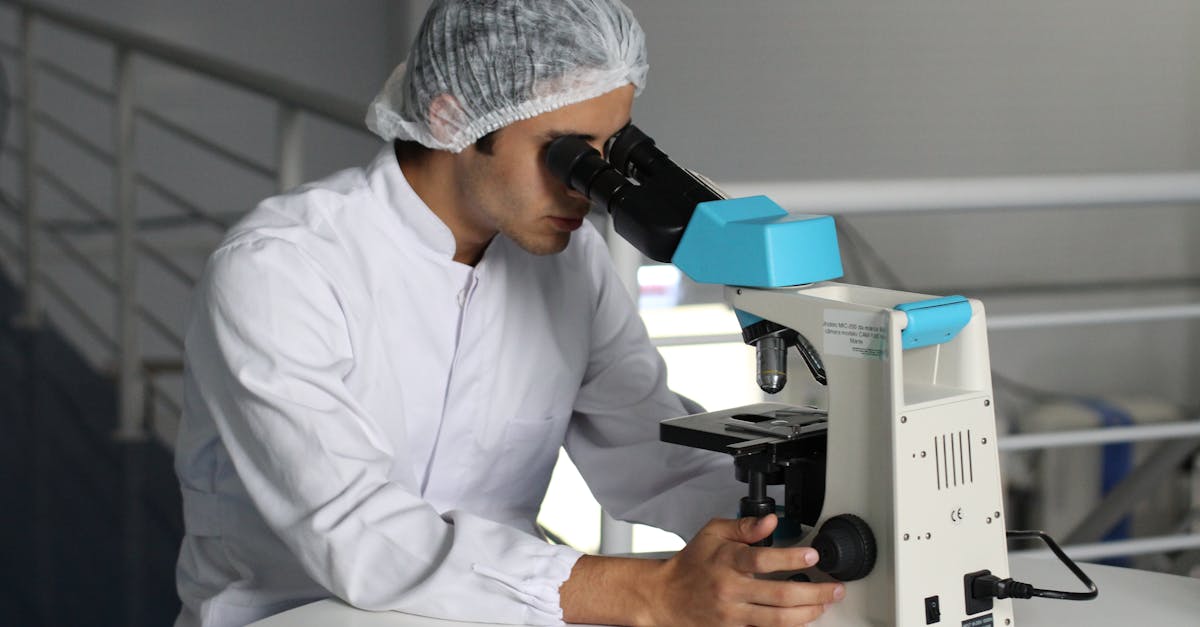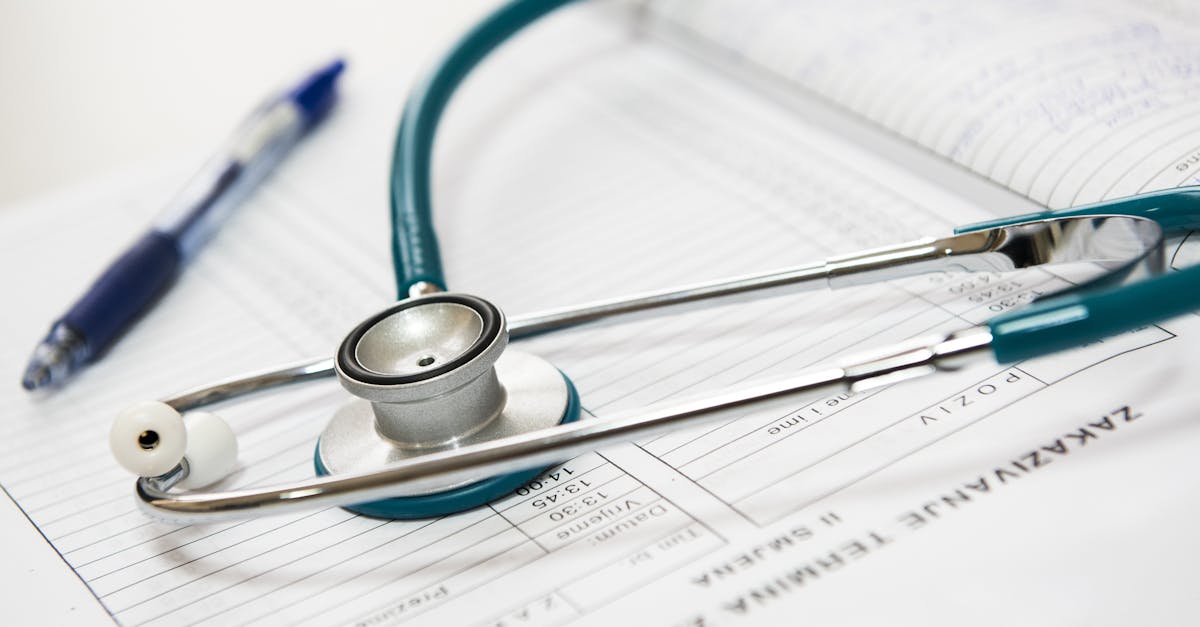
Table Of Contents
Integrating All Examination Levels
Integrating all examination levels is crucial to ensure a comprehensive evaluation of a patient's health status. From the inspection stage that involves observing the patient's general appearance to palpation, percussion, and auscultation, each level of the physical examination provides valuable information. By combining these different levels, healthcare professionals can gather a holistic view of the patient's physical well-being, which is essential for making accurate diagnoses and developing effective treatment plans. When searching for \textit{Physical Examinations near me}, it is essential to find healthcare providers who prioritize integrating all levels of examination to provide thorough and attentive care.
By incorporating the various examination levels, healthcare professionals can identify subtle signs and symptoms that may point to underlying health conditions. For instance, a thorough inspection combined with precise palpation techniques can help detect abnormalities such as masses or skin changes that may require further investigation. Likewise, utilizing percussion and auscultation can aid in assessing the functionality of different bodily systems, enabling healthcare providers to pinpoint anomalies that may not be immediately evident. Therefore, when seeking \textit{Physical Examinations near me}, individuals should look for healthcare providers who value the integration of all examination levels to ensure a meticulous assessment of their health status.
Interpreting Findings for Diagnosis
When interpreting findings from a physical examination for diagnosis, it is crucial to analyze each piece of information with precision. Physicians meticulously assess various indicators, such as heart sounds, reflexes, and skin appearance, to derive meaningful insights about a patient's health status. Understanding the significance of these findings aids in formulating accurate diagnoses and devising appropriate treatment plans. For individuals seeking medical care, knowing where to find reliable Physical Examinations near me is vital to ensuring timely assessments and proper healthcare management.
Additionally, healthcare professionals must synthesize the data obtained during physical examinations to develop a comprehensive understanding of a patient's condition. Juxtaposing different exam findings alongside medical history and diagnostic tests helps in corroborating observations and building a coherent diagnostic picture. This structured approach not only strengthens the diagnostic process but also enhances the overall quality of patient care delivered. Therefore, individuals are encouraged to prioritize regular physical exams and seek reputable providers offering thorough Physical Examinations near me for comprehensive health evaluations.
Enhancing Physical Examination Skills
Enhancing physical examination skills is crucial for healthcare providers to ensure accurate assessment and diagnosis of patients. Practitioners can improve their skills by incorporating thorough patient history-taking with comprehensive physical examination techniques. By combining these aspects, practitioners can gather a complete picture of the patient's health status, aiding in effective decision-making and management of their care. Additionally, staying updated with the latest evidence-based guidelines and practices will further enhance the proficiency of practitioners. Continuous education and training are essential to refine skills and adapt to changing healthcare practices, ultimately benefiting the patients seeking Physical Examinations near me.
Continuous Education and Practice
Continuous education and practice are essential components for healthcare professionals to refine their physical examination skills. Staying updated with the latest medical knowledge and techniques ensures that practitioners can offer high-quality care to their patients. By participating in workshops, seminars, and training programs, healthcare professionals can enhance their ability to accurately assess and diagnose patients. Regular practice enables practitioners to maintain proficiency in conducting thorough physical examinations near me, which is crucial for identifying potential health issues early on.
Engaging in continuous education and practice not only benefits healthcare professionals but also improves the overall quality of patient care. Through ongoing learning and hands-on experience, practitioners can develop a keen eye for detail and hone their diagnostic abilities. By consistently fine-tuning their physical examination skills, healthcare professionals can build trust with their patients and provide them with comprehensive and personalized care. This commitment to continuous education and practice is paramount in ensuring that patients receive accurate assessments and timely interventions during physical examinations near me.
Utilizing Technology in Physical Examinations
Utilizing technology in physical examinations has revolutionized the healthcare industry by enhancing the accuracy and efficiency of assessments. With the advent of advanced diagnostic tools and equipment, healthcare providers can now conduct thorough examinations with greater precision. From ultrasound machines to digital thermometers, technology has allowed for a more comprehensive evaluation of patients in a faster and more convenient manner. Physical Examinations near me can now be conducted with the aid of innovative technologies that provide detailed insights into a patient's health status.
Moreover, the integration of electronic health records (EHR) in physical examinations has streamlined the documentation process and improved the overall quality of patient care. By digitizing medical records, healthcare professionals can easily access and update patient information, leading to more coordinated and effective treatment plans. Additionally, EHR systems enable providers to track a patient's medical history, making it easier to monitor changes in health over time. With the help of technology, Physical Examinations near me have become more thorough, accurate, and accessible, ultimately benefiting both healthcare providers and patients alike.
Advancements in Diagnostic Tools
Advancements in diagnostic tools play a crucial role in enhancing the accuracy and efficiency of physical examinations. From traditional stethoscopes and blood pressure cuffs to more sophisticated technologies like ultrasound machines and digital thermometers, these tools provide healthcare providers with valuable insights into a patient's health status. For individuals seeking "Physical Examinations near me," the availability of modern diagnostic equipment ensures that they receive comprehensive and detailed assessments from trained professionals.
In recent years, the integration of technology in physical examinations has led to the development of innovative diagnostic tools such as handheld devices for measuring vital signs, portable ultrasound scanners, and advanced imaging systems. These cutting-edge tools not only streamline the examination process but also enable healthcare providers to detect potential health issues at an early stage, leading to timely interventions and improved patient outcomes. As the field of medicine continues to evolve, the continuous refinement and adoption of new diagnostic tools further enhance the quality of care provided during physical examinations.
FAQS
What is the purpose of the physical examination?
The physical examination is a crucial aspect of healthcare where healthcare providers assess a patient's overall health, detect any abnormalities, and monitor changes in their condition.
What are the 4 levels of the physical examination?
The 4 levels of the physical examination are inspection, palpation, percussion, and auscultation. Healthcare providers use these techniques to gather information about a patient's health.
How does inspection play a role in the physical examination?
Inspection involves visually examining the patient for any physical signs such as rashes, swelling, or abnormalities. It is the first step in the physical examination process.
What is the significance of palpation in a physical examination?
Palpation is the process of using touch to feel for abnormalities, tenderness, or changes in tissues or organs. It helps healthcare providers assess the texture, temperature, and consistency of the body.
How does percussion contribute to the physical examination?
Percussion involves tapping on the body to produce sounds that help healthcare providers assess the size, borders, and consistency of organs. It is commonly used during lung and abdominal examinations.


